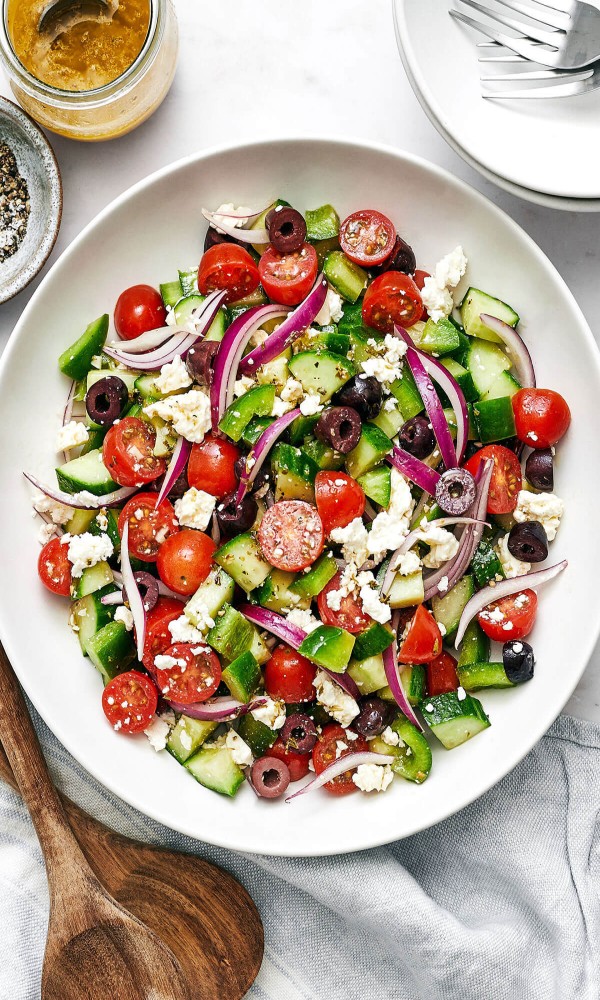The Greek salad. A symphony of vibrant colors, textures, and flavors that transports you to the sunny shores of the Mediterranean. Simple yet satisfying, this timeless dish is a staple in Greek cuisine and a global favorite. But beneath its seemingly easy exterior lies a world of depth and nuance. From the perfect balance of salty feta to the juicy bursts of tomato, every element plays a crucial role in creating this culinary masterpiece.
This guide delves into the heart of the Greek salad, exploring its history, traditional ingredients, and various interpretations. We’ll equip you with the knowledge to craft an authentic Greek salad that’s both delicious and visually stunning.

A Culinary Journey Through Time
The Greek salad’s exact origins remain shrouded in mystery. However, its components reflect the rich culinary tapestry of Greece. Tomatoes, introduced from the Americas in the 16th century, became a beloved addition to the traditional Mediterranean salad of cucumbers, olives, and onions. The addition of feta cheese, a staple in Greek cuisine, further solidified the dish’s identity.
Today, the Greek salad is an ambassador of Greek culture, enjoyed worldwide for its simplicity and refreshing taste.
Unveiling the Ingredients: A Symphony of Flavors
The beauty of the Greek salad lies in its focus on fresh, high-quality ingredients. Here’s a breakdown of the essentials:
Tomatoes: Ripe, juicy tomatoes are the foundation, providing a sweet and slightly acidic base.
The Essential Extras:
Dried Oregano: A sprinkle of dried oregano infuses the salad with a warm, herbaceous aroma.
Optional Additions:
Feel free to personalize your Greek salad with these additional ingredients:
Capers: For a burst of briny flavor.
Constructing Your Culinary Masterpiece
Creating the perfect Greek salad is an art form. Here’s a step-by-step guide:
1. Prepare the Vegetables: Wash and chop the tomatoes, cucumbers, red onion, and bell peppers (if using) into bite-sized pieces.
2. Assemble the Salad: In a large bowl, combine the chopped vegetables, olives, and crumbled feta cheese.
3. Create the Dressing: In a separate bowl, whisk together olive oil, lemon juice, oregano, salt, and pepper.
4. Dress and Serve: Drizzle the dressing over the salad and toss gently to coat.
Tips:
Use a variety of tomato colors for a visually appealing salad.
Nutritional Powerhouse
The Greek salad isn’t just delicious; it’s also packed with essential nutrients. Here’s a glimpse of its nutritional profile (per serving):
Calories: Approximately 300
Conclusion
The Greek salad is a testament to the power of simplicity. It’s a dish that’s easy to make, adaptable to your preferences, and perfect for any occasion. With its vibrant colors, refreshing flavors, and impressive nutritional content, the Greek salad is a culinary gem waiting to be explored.


